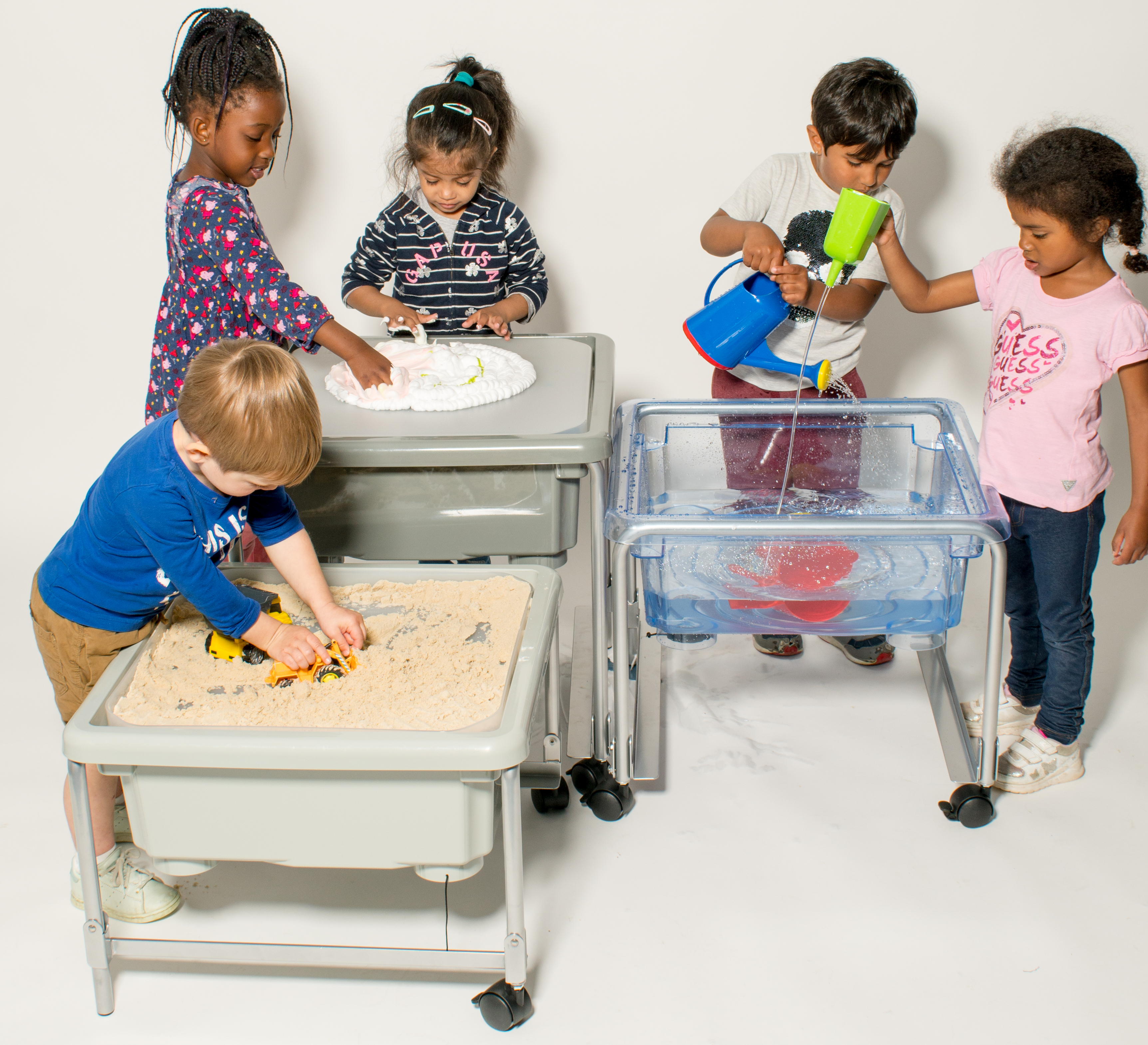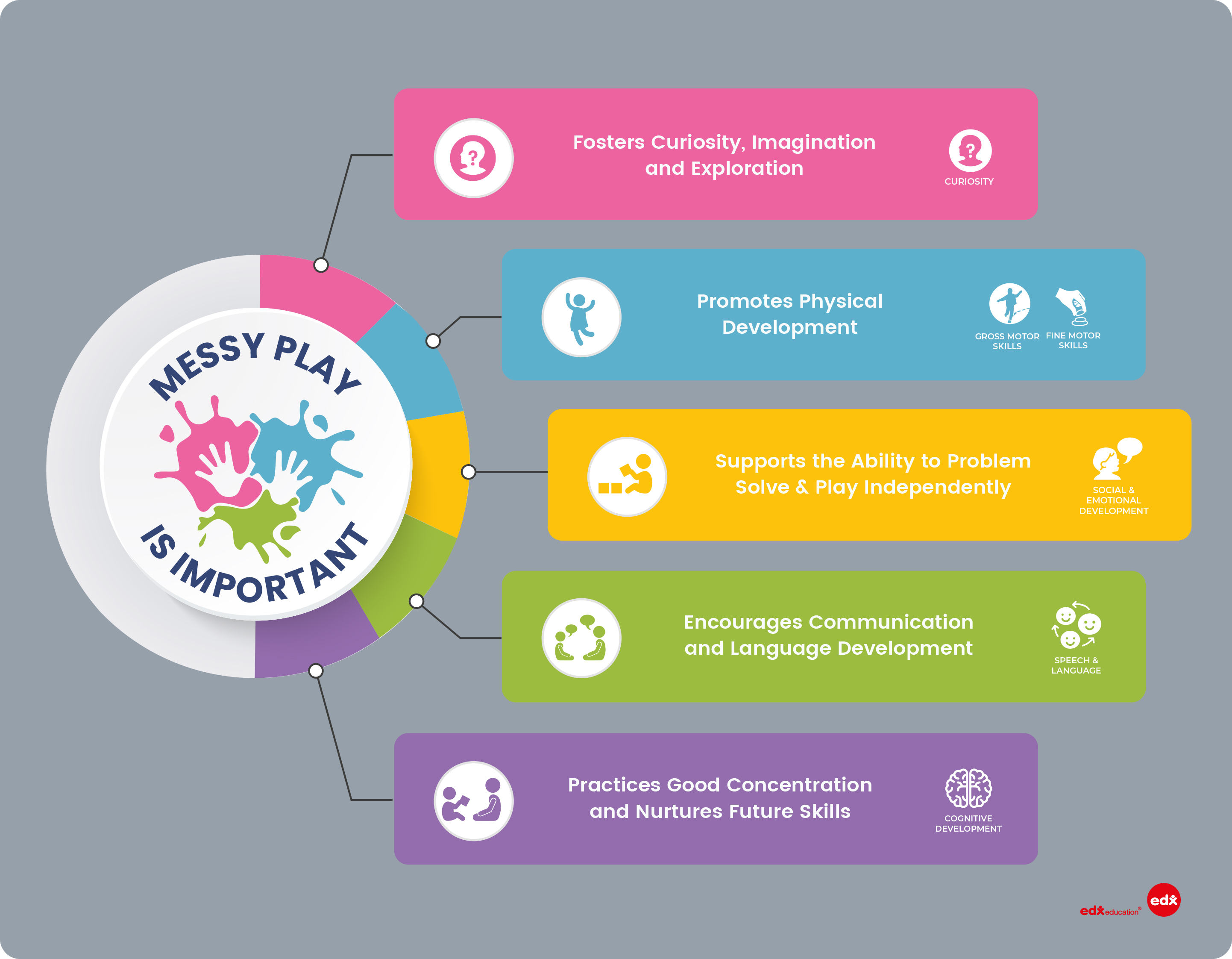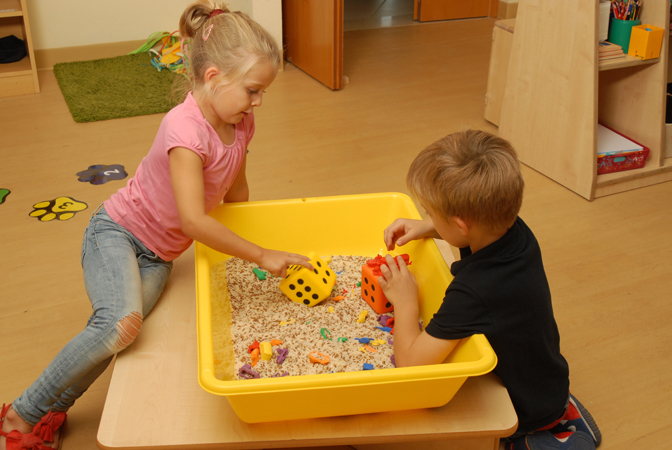There is nothing better than seeing children be free to explore and experiment through messy play. The learning opportunities are endless being creative, using their imagination and generally challenging themselves. Whether it be playing inside with bubbles, shaving foam, flour or outside in the sand and water play areas at nursery or school.
Messy play involves children using all their senses in the process of exploration, especially the sense of touch offering children plenty of opportunity to mould and manipulate materials and not having a focus on making or producing something.
Getting Messy isn’t about making a mess, it is about having an experience for children to explore and create. They are naturally curious about the world around them and will find excitement. Also develops foundation skills in the early years.
Messy play is important because its lack of a focus on making or producing something leaves the child free to explore all sorts of possibilities.
It taps into children’s innate curiosity about the world around them and their strong desire to explore and find out more.
Taking this into account, here are our some of our top messy play activities from Dr. Paul Swan Early Mathematics Experiences book, you can do inside or outside depending on the weather. That are safe, fun and messy in a safe supportive environment for learning, experimenting and exploring on a daily basis.
Lets get messy with water
There are many aspects to water play. These include:
- measuring: emptying, pouring and filling, filling up to a level
- using sieves, syphons and hoses
- floating and sinking
- washing dishes, clothes, babies (dolls)
Children may experience similar ideas while cooking, working with sand or in the home corner.
As children pour from one container to another they will be developing fine motor skills. Consider how difficult it is to fill a container to a specific level.
Holds More/Less – Children will need a variety of containers to empty and fill. The containers should include some that are identical, others that hold the same amount but look different, so children can make comparisons such as holds more, holds less, holds the same.
Rain Rain – Rain rain go away come again another day. Children often recite this poem. Ask the children how they could find out how much rain falls in a day. Children may suggest putting a container outside and seeing how full it gets. Children can use different size containers, but will eventually need to agree that in order to make comparisons from one day to the next, they will need to use the same container.
Let’s get messy with sand
The sand pit (outside) or sand tray (inside), provides children with many similar experiences to the Water Tray. The difference is that sand may hold its form. This allows children to mould the sand to form objects such as sand castles.
When children use their hands to mould an object they will use fine motor movement.
- Wet or Dry – Children can compare working with wet or dry sand. Which handful of sand feels heavier? Which handful of sand keeps its form better?
- Sand Timer – The children can make a basic sand timer by taping two plastic bottles together.
- Moulds – A variety of moulds may be used to form the sand into shapes, letters, numbers.
- Treasure Hunt – Hide some objects such as rainbow pebbles or household materials in the sand pit and let children find them.
Prime learning areas that are fostered through messy play.
Physical Development
Messy play offers an amazing opportunity to develop these early motor skills, whether it ís building muscle strength and control in fingers, wrists, arms and shoulders by squishing, squashing and squeezing playdough, or developing muscle control by making marks in shaving foam, clean mud, sand mousse or paint. As well as plenty of opportunities to develop fine motor skills, messy play offers lots of ways to develop gross motor skills, many of which can be based around children interests.
Communication and Language
Messy play allows children to work together to explore the sensory opportunities you provide whilst building vocabulary as they discover the specific attributes of a slimy dinosaur swamp or crunchy cereals or autumn leaves. It also helps to build confidence and communication skills as children roll car tyres to each other through paint or fill rubber gloves (with holes in) for each other in the water tray. When role-play opportunities are combined with messy play, children build their imaginative language and get plenty of chances to communicate their ideas through their play.
Personal Social and Emotional Development
Many messy play offerings can be planned to actively encourage cooperative play, to help children to build their social skills as well as to develop their own confidence in approaching unfamiliar situations. By supporting children in their exploration. We help them to explore their feelings about different materials, their likes and dislikes and to build their confidence to express their own ideas and feelings.
It may be child’s play, but Messy Play can have an amazing effect on young imaginations. To look at more educational toys to spark your children’s imaginations to encourage learning through play, head over to edxeducation
Original Author, Heather Welch, Edx Education, Mum, Teacher, Brand Manager edxeducation.com (IG) @edxeducation




 edx education
edx education Edx-Education-Annabel-K-ed-
Edx-Education-Annabel-K-ed-